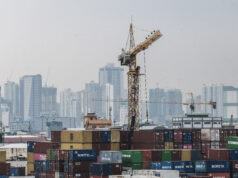Factory growth slips, still ASEAN’s best
By Elijah Joseph C. Tubayan
Reporter
IMPROVEMENT of factory activity in the Philippines slowed at the end of the second quarter, but still “signaled another strong expansion in June” that kept the country in Southeast Asia’s lead for the second straight month, according to the latest monthly survey which IHS Markit conducted for Nikkei, Inc.
The Nikkei Philippines Purchasing Managers’ Index (PMI) bared a 53.9 reading for June, down from May’s 54.3.
But it was enough to keep the Philippines in the lead among members of the Association of Southeast Asian Nations (ASEAN) for the second consecutive month which it lost to Vietnam in February.
“The Philippines manufacturing sector signaled another strong expansion in June, ending the second quarter on a positive note. Growth in output and new orders remained key drivers, which in turn boosted hiring and stock-building. Export growth strengthened and business optimism remained elevated,” the report explained.
It quoted IHS Markit Bernard Aw as noting that “[t]he Philippines manufacturing sector rounded off the second quarter on a strong note, with a solid performance in June.”
“That put the domestic economy on track for another quarter of robust GDP (gross domestic product) growth. Driving the upturn was again expansions in output and new business.”
Philippine GDP grew by a slower-than-expected 6.4% in the first quarter that nevertheless made the country the second fastest-growing major Asian economy in those three months.

Click to enlarge
Socioeconomic Planning Secretary Ernesto M. Pernia expects economic expansion for the second quarter — which the Philippine Statistics Authority is scheduled to report on Aug. 17 — to “approach seven percent” against the government’s 6.5-7.5% full-year 2017 target.
The manufacturing PMI consists of five sub-indices, with new orders having the biggest weight at 30%, followed by output (25%), employment (20%), suppliers’ delivery times (15%) and stocks of purchases (10%). A PMI reading above 50 suggests improvement in business conditions, while a score below that signals deterioration.
“While the domestic market remained the key pillar of manufacturing growth, there were signs that external demand is contributing more to the expansion. Export order growth strengthened to a three-month high,” Mr. Aw said.
According to the report, firms noted higher demand from Japan, China and Indonesia.
Security Bank Corp. economist Angelo B. Taningco said in an e-mail that this was due to the weaker peso which makes Philippine products cheaper for those buying them in dollars: “I… think the increase in new export orders in June was driven by the depreciation of the Philippine peso and stronger demand from two of the country’s major manufactured export destinations — China and Japan — given better performance of their respective manufacturing sectors…”
“Overall, the outlook for the manufacturing sector remains optimistic into the third quarter, underpinned by buoyant business confidence and strong sales volumes,” Mr. Aw said.
“That will augur well for the Philippines economy and its labour market.”
Mr. Taningco shared his optimism, saying: “I believe this trend of manufacturing expansion and rising foreign demand for manufactured exports will be sustained in the third quarter on the back of improved competitiveness of manufactured exports in the said quarter.”



